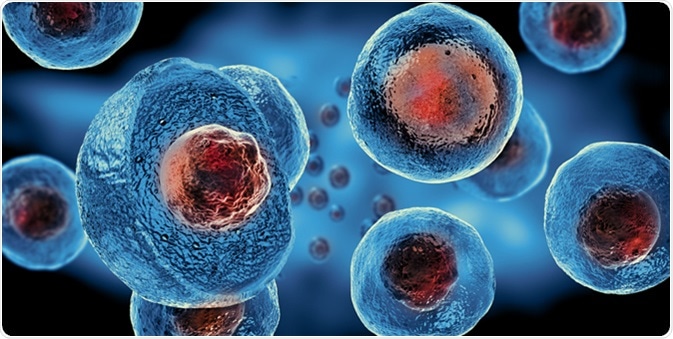Stem cells are defined by their ability to develop into different types of adult cell, while replenishing their own stores to ensure a constant supply.
For example, mesenchymal stem cells (MSCs) are multipotent and can form numerous cell types, such as osteoblasts, chondrocytes, myocytes and adipocytes. MSC stores are found in bone marrow, umbilical cord blood, and adipose tissue, and it has been suggested that stem cells from different locations have different properties.

Stem Cells in Medicine
Stem cells are a vital tool in medicine, to treat or prevent diseases. They can be used to treat people with leukaemia, limbal stem cell deficiency, immunological diseases and graft versus host disease. Many potential applications, such treatment of neurodegenerative disease, spinal cord injuries, and heart diseases are being investigated. Characterisation of stem cells from different sources is necessary to determine which source yields the best cells for these applications.
Sources of Stem Cells
Bone marrow is the most common source of MSCs. However, this source is highly invasive, and the potential and lifespan of these stem cells decrease with age. Therefore, alternative sources are being investigated for medical applications, such as umbilical cord blood and adipose tissue.
Properties of Stem Cells from Different Sources
Expression of surface proteins
MSCs from different sources were found to share similar expression profile of surface proteins, multipotential differentiation capability, the ability to form colony-forming units, and fibroblastic morphology. However, further analysis revealed differences in expression of several surface proteins, such CD90, CD105 and CD106. These proteins are associated with haematopoiesis and cell migration, and so variances in their expression could result in distinctive properties.
Colony frequency
There were differences in colony frequencies: umbilical cord blood yielded lowest and adipose tissue yielding the highest frequency. Stem cells from umbilical cord blood could only differentiate into chondrogenic and osteogenic lineages, but not adipogenic lineages. This was different from MSCs obtained from other sources, which could develop into any of the mesenchymal cell lines. Therefore, stem cells from different sources may have different differentiation potentials. Additionally, the umbilical cord blood stem cells have a lower isolation efficiency, higher expansion potential, and can be cultured for the longest period of time.
Medical applications
Umbilical cord blood may be useful in future medical applications as they have extremely high proliferation capacities and therefore very high quantities can be obtained. However, their inability to differentiate towards certain lineages is a potential problem. Stem cells from adipose tissues, however, can differentiate into all cell types and can be obtained through less invasive methods than bone marrow cells. However, these cells cannot proliferate as quickly and are limited to the amount of adipose fat that can be generated.
Sources
- https://stemcells.nih.gov/info/basics/1.htm
- https://stemcellsjournals.onlinelibrary.wiley.com/doi/full/10.1634/stemcells.2005-0342
- https://biosignaling.biomedcentral.com/articles/10.1186/1478-811X-9-12
Last Updated: Apr 22, 2019

Written by
Hannah Simmons
Hannah is a medical and life sciences writer with a Master of Science (M.Sc.) degree from Lancaster University, UK. Before becoming a writer, Hannah's research focussed on the discovery of biomarkers for Alzheimer's and Parkinson's disease. She also worked to further elucidate the biological pathways involved in these diseases. Outside of her work, Hannah enjoys swimming, taking her dog for a walk and travelling the world.
Source: Read Full Article
